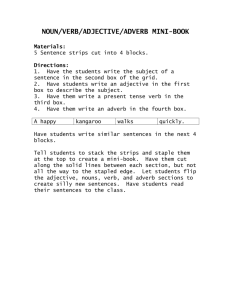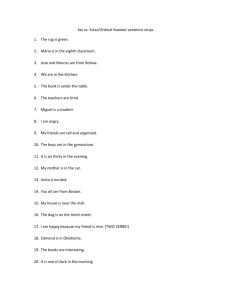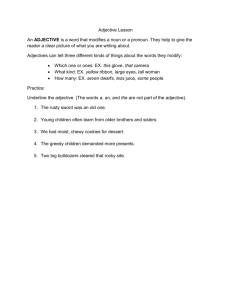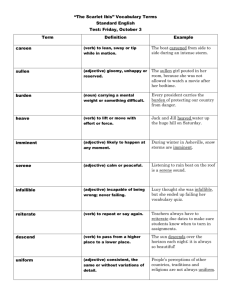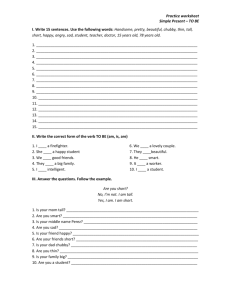EXAMPLE OF ATTRIBUTE GRAMMAR
advertisement
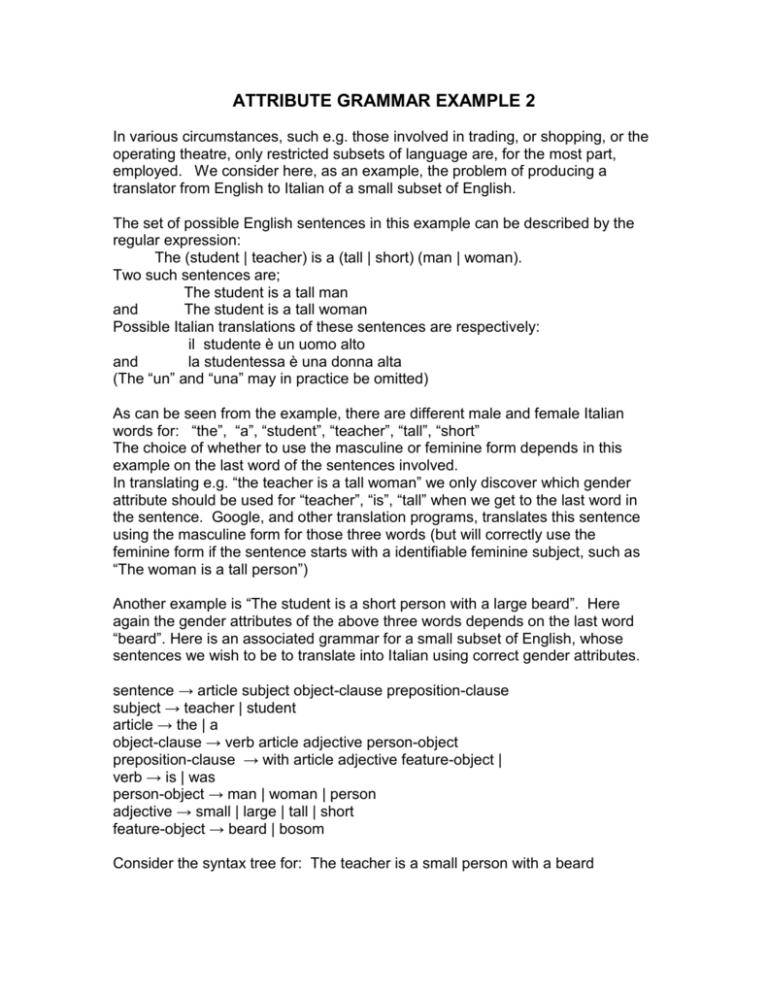
ATTRIBUTE GRAMMAR EXAMPLE 2 In various circumstances, such e.g. those involved in trading, or shopping, or the operating theatre, only restricted subsets of language are, for the most part, employed. We consider here, as an example, the problem of producing a translator from English to Italian of a small subset of English. The set of possible English sentences in this example can be described by the regular expression: The (student | teacher) is a (tall | short) (man | woman). Two such sentences are; The student is a tall man and The student is a tall woman Possible Italian translations of these sentences are respectively: il studente è un uomo alto and la studentessa è una donna alta (The “un” and “una” may in practice be omitted) As can be seen from the example, there are different male and female Italian words for: “the”, “a”, “student”, “teacher”, “tall”, “short” The choice of whether to use the masculine or feminine form depends in this example on the last word of the sentences involved. In translating e.g. “the teacher is a tall woman” we only discover which gender attribute should be used for “teacher”, “is”, “tall” when we get to the last word in the sentence. Google, and other translation programs, translates this sentence using the masculine form for those three words (but will correctly use the feminine form if the sentence starts with a identifiable feminine subject, such as “The woman is a tall person”) Another example is “The student is a short person with a large beard”. Here again the gender attributes of the above three words depends on the last word “beard”. Here is an associated grammar for a small subset of English, whose sentences we wish to be to translate into Italian using correct gender attributes. sentence → article subject object-clause preposition-clause subject → teacher | student article → the | a object-clause → verb article adjective person-object preposition-clause → with article adjective feature-object | verb → is | was person-object → man | woman | person adjective → small | large | tall | short feature-object → beard | bosom Consider the syntax tree for: The teacher is a small person with a beard sentence article subject the teacher object-clause verb article adjective person-object is a tall person preposition-clause with article adjective feature-object a beard The gender attribute of the symbols in the above syntax tree is determined by application of the following selection of rules: 1. The gender attribute of “beard” is masculine. 2. The gender-attribute of “feature-object” is given by the gender of the feature (beard or bosom) involved as it’s child in the tree 3. The gender attribute of “preposition-clause” is given by the gender attribute of its feature object child. 4. The gender-attribute of the object-clause (in the above tree) is given by its sibling preposition-clause. 5. The gender attribute of the children of object-clause (verb article adjective person-object is given by the gender-attribute of the object-clause (their parent) 6. The gender-attribute of “person” is given by the gender attribute of it’s parent “person-object” 7. The gender-attributes of the “subject” and the preceding article are given by their sibling “object-clause” As you can see gender-attribute is both a synthesized attribute (as shown by points 2 and 3) and an inherited attribute (as shown by points 4 – 7).

